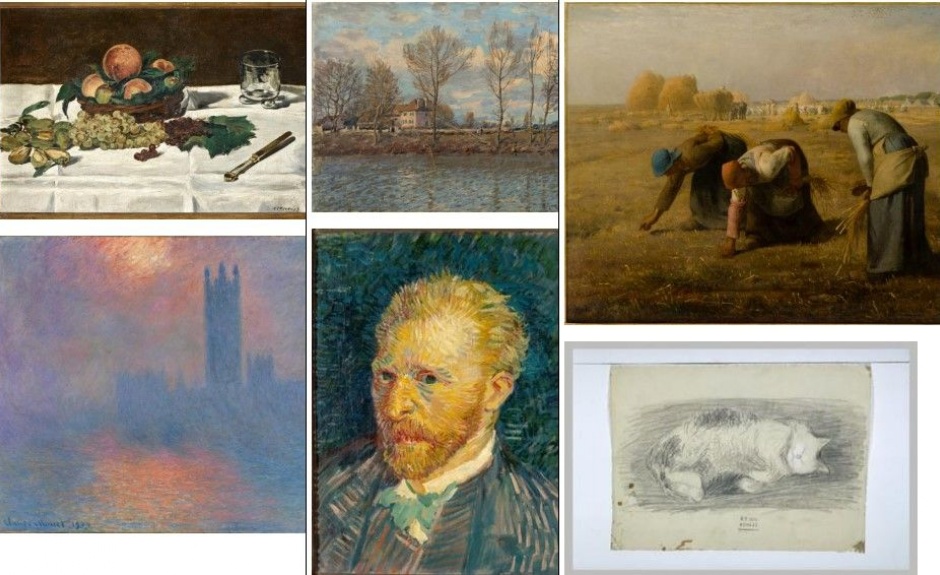Being present

It had been rather a while since I’d managed to do something truly ‘cultural’, and inordinately longer since I’d been to Paris. However, on a long weekend in half term, whilst hopping between a number of venues in the city, I found myself at the Musée d’Orsay.
It’s both a blessing and a curse that in being a teacher, you tend to view new places and experiences through the educator’s lens, constantly looking for lessons to be learned and the value that others, particularly the young, would get from them. It is living, in a very literal way, that familiar maxim: Every Day’s a Lesson. So it was that I walked around Paris, and so it was that I experienced the Impressionists’ gallery in the Musée d’Orsay. I use the word ‘experienced’ advisedly. It was an experience. I found myself profoundly and unexpectedly moved by being in-person with these masterpieces: Van Gogh, Monet, Renoir, Pissarro, Manet, Sisley… they were all there, in the same 100 metres of carefully curated wall space. I quickly found myself thinking what a shame it was that we’d not left ourselves the time that afternoon to do them all justice.
The vibrancy, the light, the texture and depth within the works all transmitted a sort of therapeutic energy which reached out to connect and then draw you in, somehow managing to obscure the scores of other visitors from your mind. It was utterly different to having seen some of these paintings reproduced thousands of times on greetings cards, posters, wrapping paper… The actual paintings themselves seemed to extend a sense of deep solace and consolation for the Human condition to the viewer (and also for earlier getting stung for €18 for a single lunchtime beer on the Rue de Rivoli!). And therein lay my ‘educator’s take-away’. Not, ‘Avoid any alcoholic beverage within a 10-minute walk of the Louvre’, you understand, but in the difference it made experiencing each Impressionist masterpiece viscerally, thanks to being in-person, live, with the real thing.
How often do our children experience so many aspects of the world that is out there, of other cultures, of art, of music, of sport, through a proxy; usually some sort of screen? We are used to arguments regarding ‘the dangers of screen time’ pertaining to impact on attention, risks of forms of addiction (in the case of gaming or social media), or of exposure to countless anonymous others around the world. These are well rehearsed. We are perhaps less used to considering the argument that, in defaulting to a screen as our portal to the world that is out there, we too easily have our minds turned from seeking to be in those moments in person and the vast difference this makes. Wherever our time and energies (and finances!) might allow, we must aim to help our children have in-person experiences, to connect with ‘the originals’ rather than to be satiated by representations of one form or another. There is nothing that can really replace seeing something with your own eyes or feeling the pulse of a different culture. And this need not be through something as highbrow as visiting a world-famous museum; it could be through something as simple as buying a fresh baguette at 7am and then lavishing it with salted butter and a healthy dollop of Bonne Maman strawberry jam.
By definition, to do otherwise – to accept TV, YouTube, or any other screen rendition as the sole point of reference – is to risk the subject feeling so much less than it is and like something ‘others’ do, but not people like me. The expression ‘being present’ has of late become quite common: on the one hand with overtones of mindfulness, but on the other hand often in response to not getting constantly diverted by screens and addictive algorithms. We should always hold ‘the power of presence’ in the highest regard. Amidst all the distractions of the modern world, fireworks events like this evening’s here at school hold their own, with their bangs, whizzes, flashes and crackles. But are we also nurturing children who can be present when there is nothing more than a 150-year-old painting in front of them? At Pilgrims’, right from the Forest School of Pre-Prep through to the concerts of the Seniors, I like to think we are.
Tim Butcher
Headmaster








